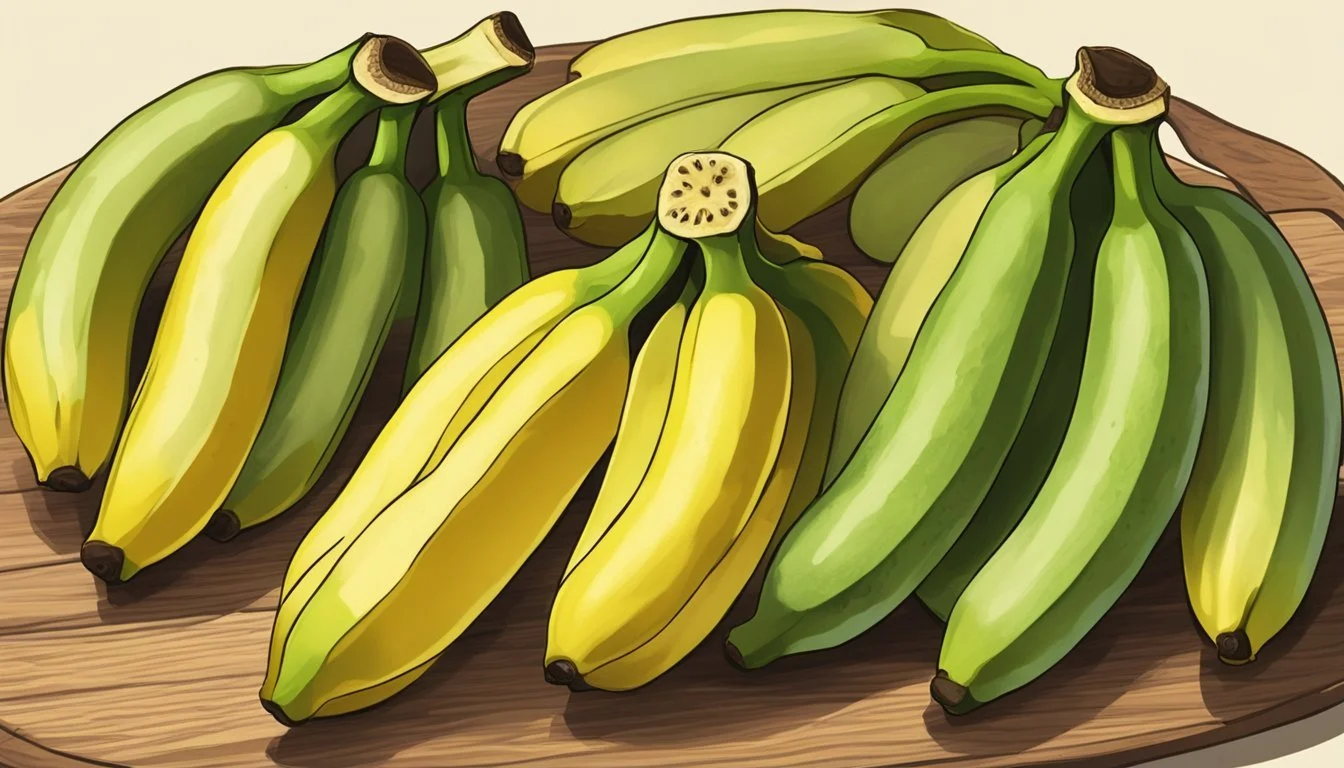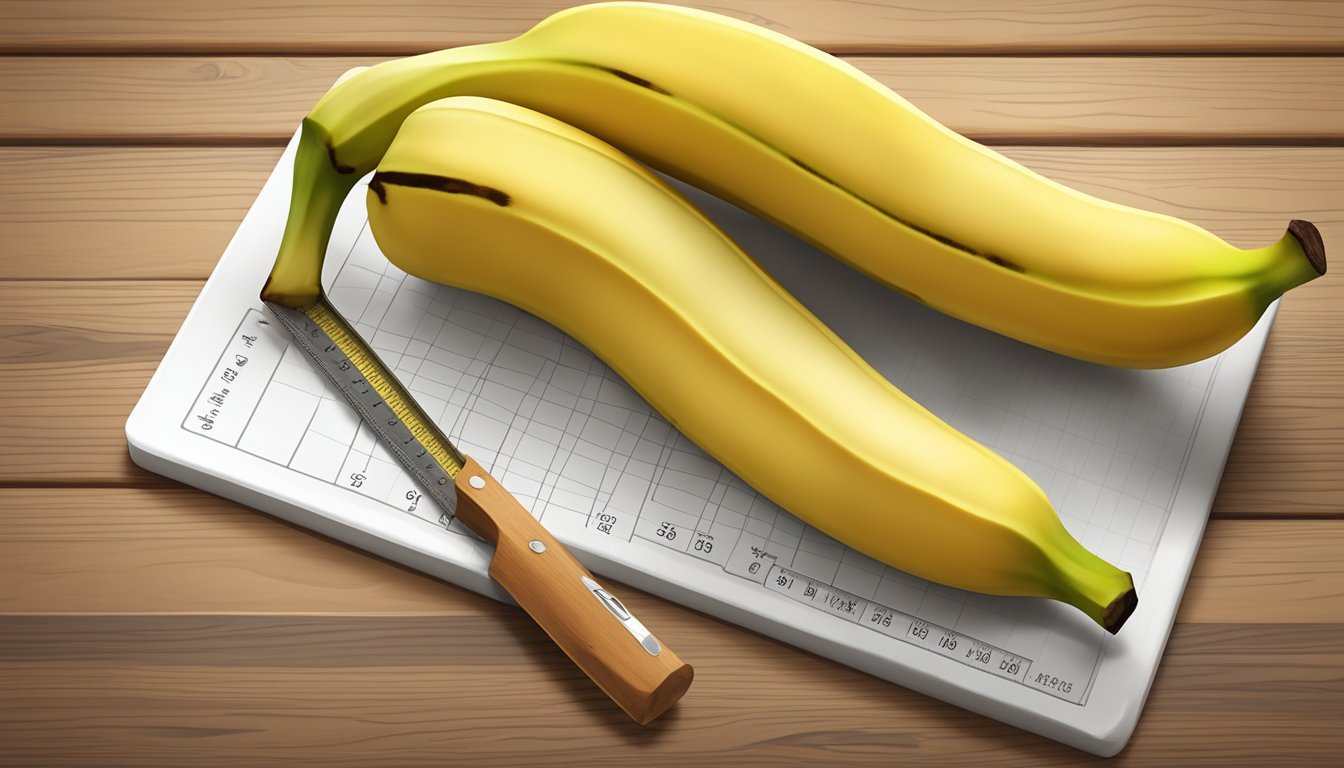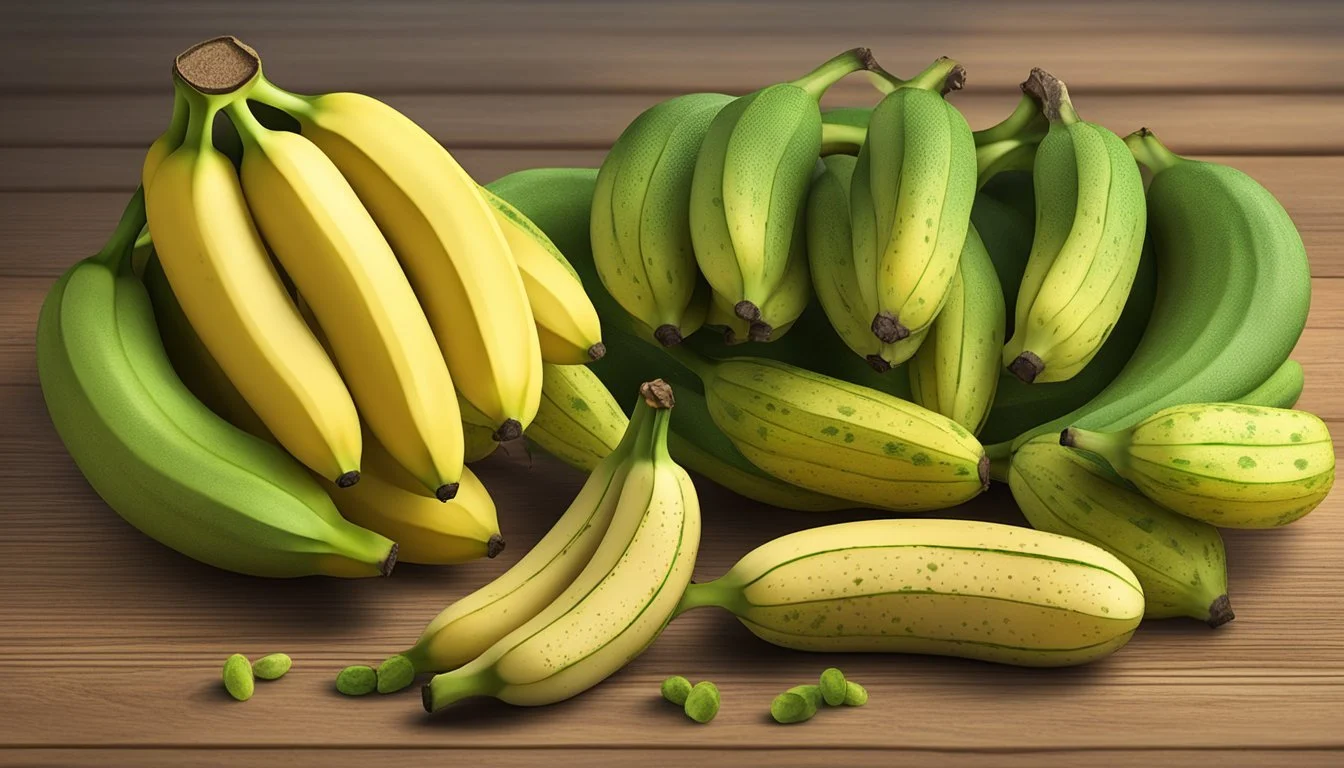How to Tell if a Lady Finger Banana is Ripe
Your Ultimate Guide to Perfect Sweetness
Determining the ripeness of Lady Finger bananas is essential for both growers and consumers seeking the best flavor and texture. Unlike common banana varieties, Lady Finger bananas have distinctive characteristics that signal their readiness for consumption. Ripe Lady Finger bananas are sweeter and more aromatic than their underripe counterparts, transforming their starchy content into natural sugars with a creamy consistency that connoisseurs appreciate.
The task of identifying the perfect moment of ripeness goes beyond just visual cues; it is a multisensory experience. A ripe Lady Finger banana emits a sweet, floral aroma and has a peel that transitions to a bright yellow with small brown speckles. Judging the fruit's readiness includes a gentle touch to assess the firmness and listening to consumer preferences for either a firmer, less sweet banana or a softer, sweeter one. Knowing the nuances of ripeness can further enhance the consumption of Lady Finger bananas for their nutritional benefits and culinary versatility.
Key Takeaways
Ripe Lady Finger bananas are aromatic with a creamy texture.
The ripeness involves a change in color and a sweet smell.
Texture, aroma, and peel color are indicators of banana ripeness.
Identifying Lady Finger Bananas
Lady Finger bananas, distinguished by their unique attributes and nutritional benefits, are a renowned variety among the numerous banana types. Exploring their characteristics and nutritional profile offers insight into their identification and value in diets.
Characteristics of Lady Finger Bananas
Lady Finger bananas, a tropical variety originating from Southeast Asia, are smaller and thinner than the more common Cavendish bananas. Physical traits to identify them include:
Size: Generally measuring 4 to 5 inches in length.
Color: Bright yellow when ripe, often with tiny black seeds visible.
Shape: Slender and elongated, with a slight curve.
Texture: Creamy and soft when ripe, while unripe bananas have a firmer, starchy feel.
Taste: Known for being sweeter than other bananas, they also possess a rich aroma often described as floral.
Nutritional Profile of Lady Finger Bananas
Lady Finger bananas provide a significant source of essential vitamins and minerals. Their nutritional profile includes:
Vitamins: Notably high in Vitamin C, they also offer vitamins A, E, K, and several B-complex vitamins, including B5.
Minerals: Rich in potassium, they contain other minerals like magnesium, calcium, iron, and zinc.
Dietary Fiber: A good source of fiber, which aids in digestion.
The nutritional value of Lady Finger bananas makes them a healthful addition to any diet, as they support the immune system and provide necessary nutrients for overall well-being.
Optimal Storage and Ripening Conditions
Lady Finger bananas have specific needs for storage and ripening to maintain their quality and flavor. Proper temperature control and recognition of ripeness stages are crucial for optimal storage and consumption.
Storing Lady Finger Bananas at Home
To preserve the quality of Lady Finger bananas at home, they should be stored at a temperature around 12-15°C (54-59°F). This range slows down the ripening process without causing the cold damage that refrigeration can lead to. Storing bananas at room temperature is ideal while they are still green.
Do Not Refrigerate: Refrigerating Lady Finger bananas before they are fully ripe may disrupt the ripening process, leading to a loss of flavor and a mushy texture.
Avoid Direct Sunlight: A cool, shaded area will prevent overripening.
Separate From Other Ethylene-Producing Fruits: To avoid premature ripening, do not store bananas with fruits like apples or tomatoes that emit ethylene gas.
Signs of Ripeness and Overripeness
A ripe Lady Finger banana will display certain tell-tale signs:
Color: A bright yellow color with small brown spots indicates optimal ripeness.
Firmness: The fruit should still be firm to the touch but not hard.
Aroma: A sweet, fruity scent is a clear indicator of a ripe banana.
If bananas reach the stage of overripeness, they may exhibit:
Skin: An abundance of brown spots and black streaks.
Texture: Soft to the point of being mushy.
Taste: Overripe bananas can taste overly sweet and may ferment, which alters their flavor significantly.
Monitoring these conditions will ensure Lady Finger bananas are stored correctly and consumed at their peak of ripeness.
Culinary Uses and Recipes
Lady Finger bananas, known for their sweet taste and small size, lend themselves well to a variety of culinary applications. As a type of sugar banana, their flavor enhances both savory and sweet dishes, and their firm texture holds up well in cooking.
Incorporating Lady Finger Bananas into Meals
Lady Finger bananas are a versatile fruit that can be easily incorporated into daily meals. Their sweetness pairs well with morning cereals, adding a natural sugar boost to start the day. Sliced thinly, they can be a flavorful addition to fruit salads, complementing other fruits without overwhelming their flavors. These bananas are also a suitable choice for blending into smoothies, contributing a creamy texture and a concentrated burst of banana flavor.
Breakfast: Add sliced Lady Finger bananas to cereal or oatmeal.
Fruit Salads: Combine with other fruits for a sweet and refreshing salad.
Smoothies: Blend with other fruits and yogurt for a nutritious drink.
Savory Dishes: Chop and add to salads or alongside curries for a sweet contrast.
Desserts and Baked Goods with Lady Finger Bananas
Lady Finger bananas are particularly coveted for their use in desserts and baked goods. Due to their enhanced sweetness, they are often used in desserts where banana is the focal flavor, such as banana bread. Their small size makes them perfect for individual dessert servings or as a decorative, edible garnish. In baking, they add moisture and a robust banana flavor that stands out among other ingredients.
Banana Bread: Mash and incorporate into banana bread recipes for a rich flavor.
Baked Goods: Dice for use in muffins, pancakes, or cakes.
Desserts: Top cakes or tarts with slices of Lady Finger bananas for a visually appealing finish.
Harvesting and Post-Harvest Handling
The key to abundant yields and quality Lady Finger bananas lies in the meticulous approach to both growing and post-harvest practices. Understanding the ideal conditions for cultivation and the most effective harvesting techniques ensures a successful crop.
Growing Lady Finger Bananas
Lady Finger bananas, native to tropical and subtropical regions, demand specific growing conditions. They grow optimally in well-drained soils with a pH of 5.5 to 7.0, rich in organic matter and essential nutrients like potassium and nitrogen. The climate should provide consistent sunlight, as these plants are sensitive to strong winds and require a sheltered environment for growth.
Harvesting Techniques and Best Practices
When harvesting, one must wait until the bananas turn yellow and show a slight softness in the peel, signaling ripeness. Harvesting Technique involves cutting down the entire bunch using a sharp knife or machete, grasping the stem carefully to avoid harming the fruit or tree. Once harvested, the bunch should be placed on a tarp or mat to prevent bruising. Post-harvest, bananas benefit from being stored in a cool, dry place. If further ripening is required, room temperature or a paper bag offers the perfect environment.
Health and Dietary Benefits
Lady Finger bananas are a nutritious choice that support health and wellbeing. They deliver essential vitamins and minerals, contributing to a balanced diet when consumed regularly.
The Role of Lady Finger Bananas in a Balanced Diet
Lady Finger bananas are packed with nutritional benefits that make them a valuable addition to a balanced diet. They are low in fat but high in fiber, which is necessary for proper digestion. The presence of vitamins and minerals such as vitamin C, vitamin B6, and potassium in these bananas helps regulate blood pressure and supports overall cardiovascular health. They also contain a moderate amount of carbohydrates, providing a healthy source of energy. Due to their nutrient density, they contribute to the requirements of a nutritious diet while balancing caloric intake.
Understanding the Benefits of Regular Consumption
Regular consumption of Lady Finger bananas can have a positive impact on one's health. The fiber in these bananas promotes the growth of healthy gut bacteria and aids in maintaining a healthy digestive system. The vitamins and minerals boost the immune system by protecting against infections and supporting bodily functions. The prebiotic nature of certain components like fructooligosaccharides further enhances gut health. Additionally, the vitamin B6 content is crucial for neural function and mood regulation. It's important to note that while Lady Finger bananas do contain natural sugars, they are part of the fruit's overall nutritional profile and can be enjoyed as part of a balanced diet.
Buying Guide and Availability
When looking for Lady Finger bananas, one should focus on the appearance of the bananas and be aware of their prime season. This ensures you get the freshest, sweetest fruit.
Selecting Quality Lady Finger Bananas
To select the highest quality Lady Finger bananas at a grocery store or market, one should look for a bright yellow color, which indicates ripeness. Unlike their cousin, the larger Cavendish banana, Lady Finger bananas, also known as baby bananas, are smaller and have a thinner peel. A perfect banana should be free from bruises and dark spots, which suggest overripeness. Though some green on the stem can indicate freshness, the rest of the banana should have graduated from green to indicate it has developed its characteristic sweetness.
Seasonal Availability and Global Sources
Lady Finger bananas are available year-round, with a peak season during the summer months. They are grown in tropical regions with leading sources including Malaysia and Indonesia. During the off-peak season, they might be sourced from different regions to ensure constant supply in the US. These bananas may still be found in specialty grocery stores outside of their peak season, but they are at their sweetest when purchased during these summer months, aligning with their natural growing cycle.
Preservation and Preparation
Proper preservation and preparation of Lady Finger bananas ensure they remain fresh and retain their quality. This section will outline strategies for freezing and storing these bananas for later use, and provide guidance on preparing them for consumption.
How to Freeze and Store for Later Use
To extend the shelf life of Lady Finger bananas, one can freeze them for later use. Begin by selecting bananas that are ripe, exhibiting a greenish-yellow color and a slightly soft texture. Here is a simple method to freeze Lady Finger bananas:
Peel the bananas, as frozen peels are tough to remove.
Slice the bananas if desired, or leave them whole.
Place the peeled bananas on a baking sheet lined with parchment paper.
Freeze them for 1-2 hours or until firm.
Transfer the frozen bananas to a resealable plastic bag, removing as much air as possible.
Label the bag with the date and return it to the freezer.
Stored this way, they can be kept frozen for up to three months. Freezing Lady Finger bananas makes them perfect for smoothies or baking as they may become mushy once thawed, which is not ideal for fresh consumption.
Preparing Lady Finger Bananas for Consumption
When one is ready to enjoy Lady Finger bananas fresh, preparing them is straightforward. The best indicators of ripeness for consumption are the banana's color and texture. Ripe Lady Finger bananas will have a bright yellow hue with small brown spots and a slightly tender feel. Here's how to prepare them:
Wash the bananas under cool running water to remove any dirt or residue.
Peel the bananas gently, starting from the stem and working downwards.
Slice or chop if they are being used in recipes, or simply enjoy them whole.
To preserve their quality, one should only peel Lady Finger bananas right before they are to be eaten. Fresh bananas are best enjoyed immediately after preparation, as exposure to air can cause browning and texture changes.
Understanding the Lady Finger Banana Plant
Lady Finger bananas, known for their sweetness and smaller size, belong to a unique group within the Musa genus. This section explores their specific botanical traits and the nuances of their cultivation, including pest management.
Botanical Characteristics
The Lady Finger banana, often referred to as 'Pisang Mas' in Southeast Asia, is a sub-variety of the species Musa acuminata. It is closely related to other dessert bananas such as the 'Sucrier', 'Date Banana', 'Manzano Banana', and the 'Apple Banana'. Lady Finger bananas distinguish themselves through their elongated, slender fruits, usually measuring 4 to 5 inches in length when mature.
Physical Description of Trees:
Height: The standard Lady Finger banana plant can grow 15 to 25 feet tall, while the dwarf varieties reach about 15 feet.
Leaves: Broad and large, with a typical lush green color.
Fruit Characteristics:
Size: A mature Lady Finger banana grows typically 3-5 inches long and about 0.5 inches in diameter.
Appearance: They are thin-skinned, bright yellow when ripe, with a sweeter taste than the commonly consumed Cavendish bananas.
Cultivation and Pests
Cultivating Lady Finger banana plants requires specific environmental conditions. These plants are best suited to tropical and subtropical climates where they can receive ample sunlight and warmth.
Cultivation Requirements:
Soil: Prefers well-draining soil with pH levels between 5.5 and 7.0, supplemented with organic matter and nutrients, particularly potassium and nitrogen.
Watering: Consistent and frequent watering is crucial, as banana plants are heavy drinkers.
Maintenance: The dwarf Lady Finger variety often suits backyard cultivation due to its somewhat smaller stature and manageable care requirements.
Pests and Diseases:
Common Pests: Aphids, banana weevils, and nematodes pose threats to the Lady Finger banana trees by affecting the roots and overall plant health.
Disease Management: Monitor for signs of diseases like Panama disease and Banana Bunchy Top virus, which can severely damage the plants. Appropriate pest control measures and diligent care help in keeping the Lady Finger banana plants healthy.






